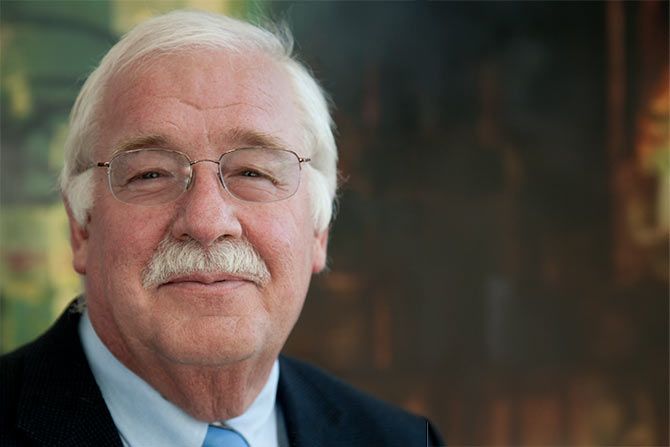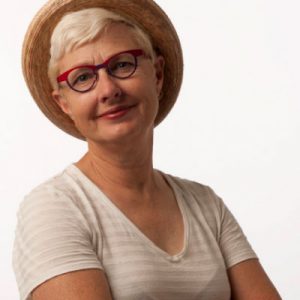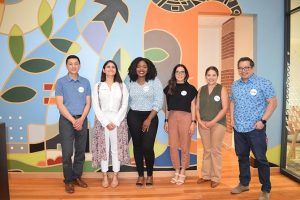As part of our ongoing series of interviews with architectural legends, we are proud to present this interview with Donald Finlayson, AIA. We spoke about his introduction into architecture and how his experience brought him to where he is today. We hope you enjoy learning more about Don as much as we did.
This interview has been edited for length and clarity.
When did you decide to become an architect?
I decided to be an architect at a pretty young age. I helped my father build a house when I was 10. Then at 13 or 14, I took a drafting class, and the last project was to design a house, and I was hooked.
Where were you?
I grew up in Midland, Michigan. It was the home of Dow Chemical, one of the largest chemical companies in the world. It was a great place to grow up because of the intellectual quality of that town. One of the sons of the founder was Aldon Dow, who was a student of Frank Lloyd Wright.
Where were you trained and then ultimately how did you land here?
In high school, I decided to try to go to the University of Michigan. I also applied to BYU. The University of Michigan, to my great astonishment, sent me a letter saying that they “couldn’t predict my success.” So, after graduating from BYU, I still planned to be an architect, but BYU did not have an architecture school. So I reapplied to the University of Michigan and graduated as one of the top in my class in 1976.
Having graduated, I moved to Washington, D.C. This was during a recession that was every bit as deep as the recession of 2009-2010. I sent resumes to every architect in the phone book and got six replies. When I visited them, three of them said, “We just liked your resume. We didn’t have anything else to do; we just thought we would talk to you since you are here.” I got no job offers. But during my time at the University of Michigan, I was a draftsman at a hospital consulting firm, and I got great experience learning about hospitals and healthcare.
I used that experience to find a job with a startup hospital consulting firm in D.C. that turned into a great opportunity. Six months later, we had won a project for the federal government in Hawaii with two architectural firms that had no healthcare experience at all. Since I was single, they asked me to move to Hawaii (hard duty, but somebody had to do it) to be the resident. This was in early 1977. I distinctly remember sending sketches back to the home office using a fax machine, five minutes per page. I was there for six weeks at a time, off and on for three years. The rest of the time, I was back in the States, working on other projects. Soon, we had a project working for the San Diego Naval replacement hospital and a replacement hospital for the VA in Bay Pines. These were projects that were driven by the federal government to try to pull the United States out of a recession. So here I was traveling back and forth between Hawaii, Long Beach in California and Florida for three years, with a few stops in D.C. to see what was going on in the office. It was an amazing experience for someone who was just out of school.
What did you learn?
It started before that, in the summer of 1974, while I was still in school working for a hospital consulting firm. Our assignment was to develop signage for a hospital in East Detroit. They took me to this hospital, and I sat in the emergency room right across from registration. You couldn’t do this today because of HIPAA laws. I was within two or three feet of where they would check in patients. In comes a construction worker who had dropped steel on his toe. They had no place for him to sit at the registration desk. It was a metal, old line desk with a standard that had glass in it.
They asked him, “What’s your name? What’s your mother’s name? What’s your father’s name?” The 40 questions that you get. He was obviously not feeling well, so he turned around to sit beside me and she said, “Oh, I only have three more questions.” He turned around, fainted and hit the top of the pole that held the edge of the glass and fell on the floor right in front of me. They picked him up, put him on the gurney and took him into the emergency room. A half-hour later, I saw him admitted to the hospital with a concussion. What I learned from that was: we can do better.
During that time, I got the experience of starting to design these big hospitals; hospitals that would now be billion-dollar hospital projects, three of them in the very conceptual stages. No architect with one year or two years of experience ever got to do that.
How did your career evolve?
When those projects started to decrease, our consulting activities focused less on designing hospitals and more on the operations of hospitals. While it was fascinating, it didn’t feed my desire to be an architect. At the five-year mark, in 1979/80, I got restless. I had met another architect in Washington, D.C. and asked him if they had a position. This guy knew my boss. He called him and said, “Is this okay?” That was one of the first times I saw someone sacrifice themselves for the development of another person.
I moved to a firm that I don’t think exists anymore, VBKR. It was a 200-person firm that serviced Virginia. The University of Virginia was doing a major replacement hospital in Charlottesville. We teamed with what we thought was the best national firm: Hansen Lind Meyer, another firm that no longer exists. That introduced me to Dick Hansen. I moved to Iowa to be an understudy to him and learned an immense amount about how to work with academic medical centers. That led to work at the University of Michigan, the University of Pennsylvania Hospital, the University of Iowa and so on. It was quite a resume builder. Within a couple of years, he decided it was time to retire, and I was part of a group that was tasked with buying out the two founders. That was both a wonderful experience and the seeds of disaster because there were 10 of us who hadn’t really worked that well together, pulling this buyout together.
It all worked as long as the economy was good. But in 1990, there was another recession, and there was a lot of infighting between the Florida office, the Chicago office and the Iowa office on who ought to take the cuts. Ultimately, that led to firing two presidents. When they brought in a president from the outside, I met him, then said, “I have to leave. This is not going to work.” I then joined Cannon Design in Buffalo, New York, another large national firm. I was nominally in charge of the Buffalo office healthcare practice, though that didn’t really mean a whole lot because more of the healthcare practice was done in other offices throughout the country.
I had met Tom Jensen of Jensen Haslam, and we developed a relationship while working on a hospital in Burley, Idaho. One snowy day in Buffalo, New York, he called and said, “I see that it’s snowing. Are you ready to come to Utah yet?” So, on Jan. 1, 1997, I started here in Salt Lake in charge of Jensen Haslam’s, 15-20 person Salt Lake office. The rest of the firm was in Logan.
I had moved to Utah with one great motive: I had two 10-year-old sons, and they needed their dad. But I came with experience and a relationship with the University of Utah as well as Intermountain Healthcare, and we began slowly developing work. My first assignment, almost the day that I arrived, was to help the hospital in Heber, which was in just awful shape, find a way to replace itself.
I found out later that the corporate man in finance wanted this study done so that he could close that hospital. I lived in Heber, and the study to do that hospital was quite an exercise. We needed only 12 beds, and the architectural issue was to design it so that 40 staff members could operate the whole hospital. Most of the staff had multiple jobs. The assistant administrator was also the OR director, and on and on. At the same time, we had a contract with the hospital in Nephi. That created a practice for us in small hospitals that was quite amazing. In the course of 10 years, we did 25 or 30 very small hospitals throughout the Western United States and the first brand-new hospital in Maine in 40 years. Along that path, we established ourselves doing healthcare work. The University of Utah was ready to begin a development of their hospital facilities, again, very badly needed additions and renovations.
One of the local contractors came to me and said, “If you team with Thomas Petersen Hammond, you will win that job, and we’d like to be your partner.” I’d not met anyone from Thomas Petersen Hammond, and to my great joy, I met Tim Thomas, who became a dear friend, and we won the project. I’m very proud of that facility because we changed not only the look but also the quality of delivery of the facilities.
So now how did Thomas Petersen, Hammond and Jensen Haslam get together?
I was the person who knew both firms really quite well as we worked on the University [of Utah] Hospital project. I actually asked the people from Thomas Petersen Hammond to come take up space in our office so we could work as colleagues. They did, and we found that we liked them an awful lot. As that project came to the end of design, I went to Tim and said, “Would you guys ever think about joining up — being together? This is an opportunity for two smaller firms to become one of the bigger firms in Salt Lake.” He went back and approached his colleagues, and thus the marriage came to be.
Talk about projects that you were particularly proud of and why?
The Huntsman Cancer Hospital is one not only because it’s beautiful, not only because it’s important here, but also because I lost a daughter to cancer while we were designing it. And every time I go up there, I’m close to my daughter. At the Huntsman Cancer Hospital, we had an opportunity to start from scratch and do healthcare the right way. Working with me was a physician, Joe Simone, who was vital to the development of the Huntsman Cancer Institute and the Director of the hospital.
And we laid out some principles: we said the patient comes first. And throughout the design process, we would ask that question, “What’s best for the patient?” And what you see when you go visit that facility is our take on what was best for the patient, even if that made the assignments for those who work there a little bit more difficult. That was fundamental to why I was doing healthcare architecture as a specialty.
I started out my career visiting older hospitals that had walls that were painted a dull green. I asked one of my mentors, “Why do we see so much green?” And he said, “Have you ever looked at the color wheel?” I said, “Yeah.” “Do you know what color is the opposite of red? The color of blood? It’s a dull green. And if blood gets on that dull green, it looks brown. That’s why.” Oh, my gosh.
I noticed that the operating room suites were on the top floor when we visited an old VA hospital. I asked that same mentor, “Why would you put them on the top floor,” and “We never do that anymore.” He said, “Well, this is a six-story building. The theory was that flies can’t fly up past five floors.”
Talk to me about the changes in the architectural profession.
Everything about the architecture of healthcare today has changed from when I began my career. One of the AIA committees I joined was Healthcare. It was called a committee in those days, now it’s called an academy. My first meeting was in the AIA Headquarters in Washington, D.C., and there were 14 of us. Today, when the academy meets, 3,000 or 4,000 people come. We’ve seen a vast change. And I’m pleased to have been on the forefront of humanizing hospitals. That’s why I did what I did.
When I started out, we drew with pencils on vellum. Quickly, it became ink on vellum and then trying to figure out how to do computers. One of the interesting things that HLM had explored in their early days was minimizing drawing by using what they called pen register drawing where multiple layers of vellum would be put on top of each other, much like the layering that now exists in some computer programs for developing various disciplines, so that concept came very early to me.
If I hadn’t succeeded in architecture, I would have gone into computers. I remember when Steve Jobs started marketing the Apple II — I wanted to buy one but couldn’t afford one for a few years. And I saw our industry change through the years in trying to figure out how to adapt to the computer capabilities. I was in large firms at the time, and even the large firms struggled with the financial investment that was necessary to make the conversion.
I was at an age that learning what we used to call CADD, did not make sense for me. But I did use simpler computer programs on the Macintosh to do a lot of the planning. Many of those same tools are used today in the early planning stages.
I was made a Principal when I turned 35. At 37, I was involved in a buyout of the founders. It was a horrendous task, and one I was unprepared for. We ended up using an employee stock ownership plan, which gave the founders an increased value and also provided some tax benefits by having all of the employees be able to share in the ownership.
Once I started bringing together Jensen Haslam and Thomas Peterson Hammond, I realized that 85% of the ownership of the two firms was held by people that were 55 or older, and I was the youngest. Guess who was going to have to hold the bag. So, I learned from the earlier experience, and we established an ESOP program that we grew into. And now Architectural Nexus is 100% employee owned. And that’s an achievement that I’m really proud of because it really is an opportunity to be able to return to those who create the wealth of the company, the value of that wealth.
Have there been any disappointments along the way?
Oh, heavens, yes. I talked about the University of Virginia project. We lost that, but I won the opportunity to be part of Hanson Lind Meyer. When I first moved to Utah, I had done the studies for the site selection and the programming for the McKay replacement hospital. One of the greatest disappointments was not being selected to do that. But everyone wins projects/loses projects. You can’t let that be too big of a disappointment. You get to do the ones that you’re supposed to.
What advice would you give a young architect starting out now?
Have a vision of what you want added to the world when you’re done. Architecture as a profession shouldn’t be just an employment. I know that I’ve changed lives. I know that matters. I volunteered at the Huntsman Cancer Institute after I retired, and I can’t tell you how many people, when they squeezed out of me that I had been the architect, thanked me for the experience they had there.
Would you do it all again?
Be an architect? Oh, yeah. I might do it a little differently. I asked my mentor, Dick Hanson, what he would do again, and he said, “I’d spend more time with my family.” It is a very demanding profession. There’s no way about it. And you have to put in who you are as one of the ingredients in order to achieve what you set out to do early in your career.









